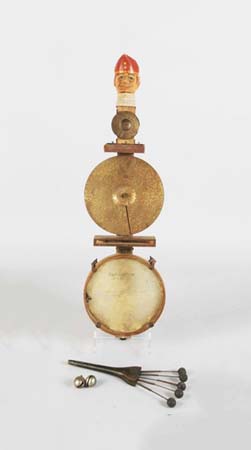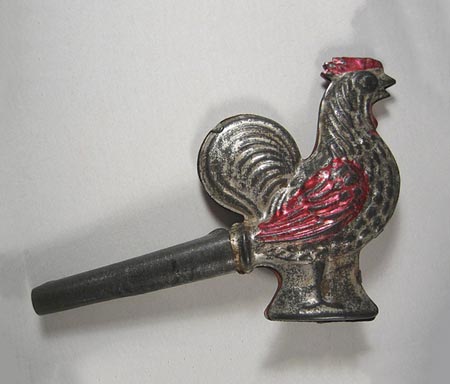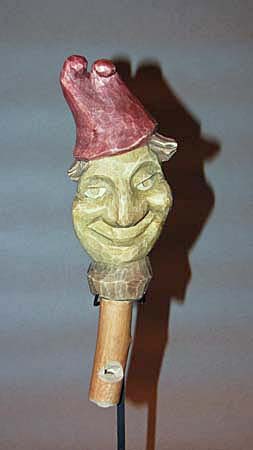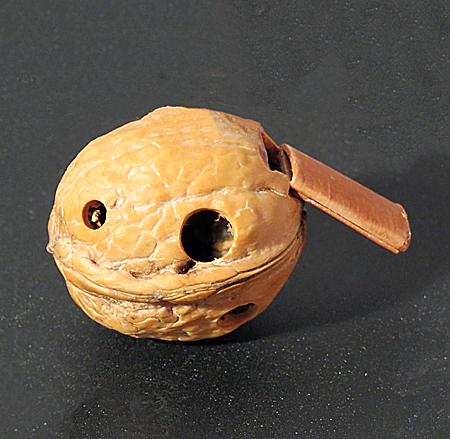1900s-1910s
The folk art of the early 1900s reflected rural America. Artists developed their distinctive styles and artistic methods that captured the utilitarian nature of the regions and communities they called home. The folk-art idea of a one-man-band that allowed children to play multiple instruments with one combination toy, became a catalyst for electronic music in decades to come. Other folk-art toys, such as the ‘Jigger Dancer’ would help children keep the beat as they played, while whistles of all types served as devices for a range of communication options. The roly-poly toys were for children just developing motor skills; as a small child could bat at it without its rolling away, encouraged by the sound of the soft playing chimes as it rocked. Plastic was yet to be invented, so all toys were made from wood, paper, cloth, or metal. Perhaps the most popular musical toys were the ones rendered in brightly decorated tin. Special were the classic windup music boxes.
During this time most non-musical play toys were directed towards inspiring children to come up with new ideas to further the nations progress, such as tinker toys and toy trains as America was moving forward as an industrial society. In the following decades more contemporary technology is introduced which will set the foundation for the next generation of musical toys.

Musical Clown Roly Poly
Paper Mache
1900s

Jigger Dancer
Tin, paint, wood
1910s

One Man Band (small)
Metal, wood, paint
Xylophone, cymbals, drum, woodblock, bells
1910s

Rooster Whistle
Tin, paint
1910s

Folk Art Whistle
Wood, paint
1910s

Folk Art Walnut Whistle
Walnut
1910s

Organ Box [Hand Crank]
Tin Lithograph
Leonard Muller Nuremberg, Germany
1900s
